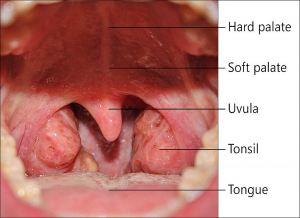A number of medicines are used to help treat congestion. These include antihistamines, decongestants, and anti-inflammatories. Which medicine to choose depends on the underlying cause of the congestion.
An antihistamine helps reduce the body’s response to allergens. When a child is allergic to something — carpeting, cats, cig¬arette smoke, and so on — the body releases chemicals called histamines upon exposure to the allergen. Histamines produce a classic allergic response: sneezing, watery eyes, and runny nose. Antihistamines blunt this response so that even with exposure, the histamine effect is reduced. Remember, though, that remov¬ing the irritant is the best treatment.
 Decongestants are medicines that help dry up the fluid and mucus produced by the nose and sinuses. They are designed to treat congestion, but they are really best at mopping up fluid. Therefore, if the mucus is thin and clear, they tend to be very effective. But if the mucus is thick and yellow or green, a decon¬gestant can dry up the fluid but leave behind thick gobs of mucus blocking the back of the nose and the sinuses. This can actually make the congestion worse. Decongestants also may have a stim¬ulatory effect on some children. Be careful when you use one for the first time, because there is a chance that your child will become quite active for a few hours following the dose.
Decongestants are medicines that help dry up the fluid and mucus produced by the nose and sinuses. They are designed to treat congestion, but they are really best at mopping up fluid. Therefore, if the mucus is thin and clear, they tend to be very effective. But if the mucus is thick and yellow or green, a decon¬gestant can dry up the fluid but leave behind thick gobs of mucus blocking the back of the nose and the sinuses. This can actually make the congestion worse. Decongestants also may have a stim¬ulatory effect on some children. Be careful when you use one for the first time, because there is a chance that your child will become quite active for a few hours following the dose.
Anti-inflammatories target inflammation in the body. Infec¬tions and allergies often stimulate inflammation in the nose and sinuses. Inflammation increases mucus production and thickens the mucus. Using an anti-inflammatory reduces mucus volume and thins the mucus so that it can drain more easily. Remember that a draining nose is always better than a congested one, and this is where an anti-inflammatory may help your child.
What are the possible complications?
It is rare for nasal congestion to become seriously complicated. If it lingers for too long, the mucus congesting the nose can back up through the sinuses — the spaces in the bones above the cheeks, next to the nose, and surrounding the eyes. Children have small and underdeveloped sinuses that can easily get clogged with mucus. From there, a child can go on to develop a sinus infection or ear infection. These secondary infections are often accompanied by a fever, irritability, and a thick nasal discharge. In rare cases, postnasal drip can drain into the lungs, leading to bronchitis or pneumonia.
